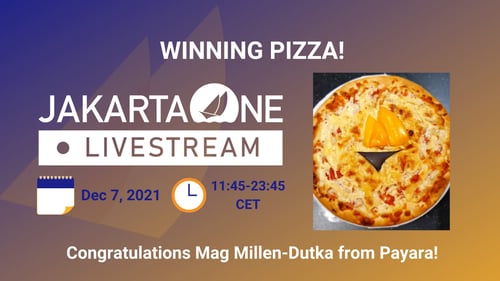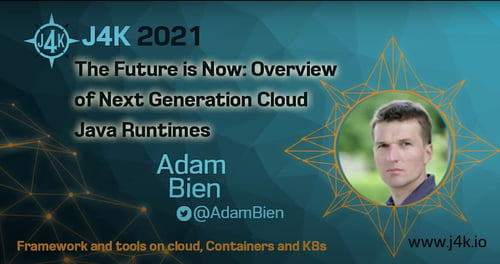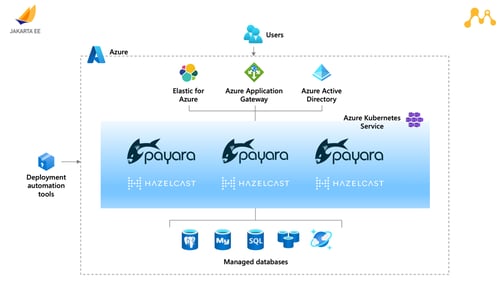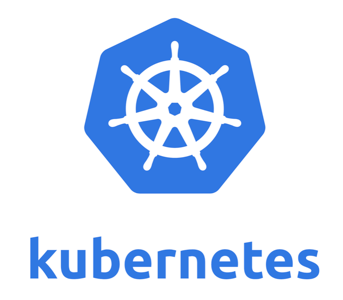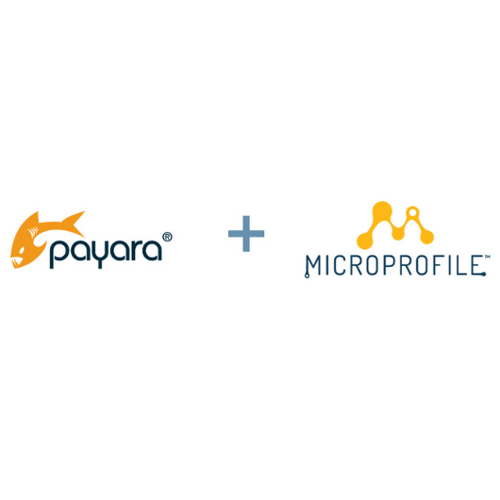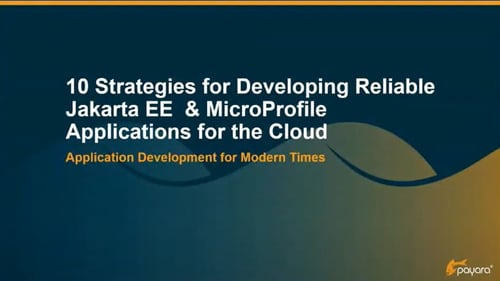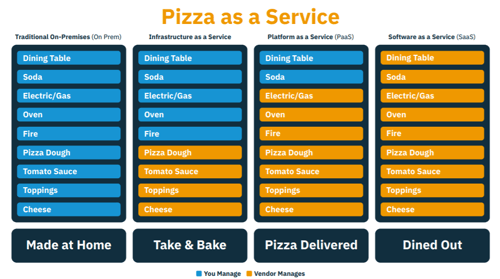Posts tagged Cloud-native (2)
Payara at the JakartaOne Livestream
Published on 13 Jan 2022
by Priya Khaira-Hanks
Topics:
Java EE,
Microservices,
MicroProfile,
Cloud-native,
JakartaEE,
Java,
Payara Cloud
|
0 Comments
The JakartaOne Livestream is a huge event in the Jakarta EE and MicroProfile calendar. Organised by the Eclipse Foundation, it is a one-day virtual conference for developers and technical business leaders.
It brings insight into the current state and future of Jakarta EE and related technologies focused on developing cloud-native Java applications.
VIDEO: Adam Bien - The Future is Now (Payara Cloud)
Published on 09 Nov 2021
by Priya Khaira-Hanks
Topics:
Java EE,
Microservices,
MicroProfile,
Cloud-native,
JakartaEE,
Java,
Payara Cloud
|
1 Comment
Adam Bien explored the possibilities of Payara Cloud in his recent talk for the 2021 J4K conference!
He used the Payara Cloud demonstration environment - with the caveat that the user interface is not completed yet - to demonstrate how our next generation application server creates a "serverless" environment; moving the "plumbing behind the scenes" so you only have to worry about selecting your WAR, clicking deploy, and running it on the cloud!
Official Microsoft Azure Sample for Payara Micro
Published on 07 Oct 2021
by Priya Khaira-Hanks
Topics:
Cloud-native,
JakartaEE,
Microsoft Azure,
Payara Cloud
|
0 Comments
Payara Server has a strong relationship withMicrosoft Azureand theJava at Microsoft team - and now, there's an official best practice Azure Sample for running Payara MicroonAzure Kubernetes Service(AKS)!
This is a reaction to more and more Azure customers wanting to run Payara on Azure, with many moving from GlassFishto Payara Micro on AKS. It also precedes the next step for Azure and Payara: releasingPayara Cloud as a PaaS running on Azure.
Do You Really Need Kubernetes?
Published on 09 Jun 2021
by Rudy De Busscher
Topics:
Cloud-native,
Kubernetes,
Containers,
Payara Cloud
|
0 Comments
These days, it seems Kubernetes is a topic that is never too far from people's lips. The tool, and the associated tools built around it, are talked about so often it seems it's the only subject important to developers these days - especially as the IT world becomes increasingly orientated towards cloud and microservices.
But in spite of all the conversation around Kubernetes... do you really need Kubernetes for your environment? Or is it just another case of the next 'new and shiny' object, with people distracted by the novelty and possibility, rather than the facts? In this blog, I'll take a closer look at why Kubernetes might be a case of the hype outweighing the helpfulness in most cases.
Payara Services Joins MicroProfile Working Group
Published on 20 Jan 2021
by Priya Khaira-Hanks
Topics:
Microservices,
MicroProfile,
Eclipse,
Cloud-native,
news and events
|
0 Comments
Payara is pleased to announce that we have joined the MicroProfile Working Group. This builds on our commitment to shaping and improving Enterprise Java for both microservices and monolithic architectures.
The MicroProfile project was born as a community initiative to optimise Enterprise Java with a microservices standard platform. It joined theEclipse Foundation in 2017, an independent open source software association, with the goal of driving innovation with a vendor-neutral "incubation" environment.
The Eclipse Foundation's MicroProfile Working Group encourages collaboration between participants, working in short cycles to propose and gain approval for new common APIs and functionality - and in turn drawing on the knowledge of a wide variety of different vendors. As one of the contributors, Payara engineers will shape and drive the future of the MicroProfile specifications.
We talked to our Founder and CEO Steve Millidge to find out more about what this means.
10 Strategies for Developing Reliable Jakarta EE Applications for the Cloud
Published on 27 Nov 2020
by Fabio Turizo
Topics:
Java EE,
Microservices,
Clustering,
Scalability,
Cloud,
Monitoring,
Cloud-native,
JakartaEE,
Payara Platform
|
0 Comments
What happens when an application designed for a small user base needs to be scaled up and moved to the cloud?
It needs to live in a distributed environment: responding to an appropriate number of concurrent user requests per second and ensuring users find the application reliable.
Though Jakarta EE and Eclipse MicroProfile can help with reliable clustering, there is no standard API in Jakarta EE that defines how clustering should work currently. This might change in the future, but in the meantime, this gap must be filled by DevOps engineers.
In this blog, we will cover 10 technical strategies to deal with clustering challenges when developing Jakarta EE and MicroProfile for cloud environments.
How To Bring Your Java Microservices To The Cloud
Published on 10 Sep 2020
by Jadon Ortlepp
Topics:
Java EE,
Microservices,
Cloud,
MicroProfile,
Cloud-native,
JakartaEE
|
0 Comments
All companies are software companies, and businesses will always experience the challenge of keeping integrations between users and applications scalable, productive, fast, and of high quality. To combat this, cloud, microservices, and other modern solutions come up more and more in architectural decisions.
Here is the question: Is Java prepared to deal with these diverse concepts in a corporate environment?
Yes, and to demonstrate how Jakarta EE and Eclipse MicroProfile work very well and in the cloud, the Payara and Platform.sh will work together on this webinar. Watch and make your conclusions.
How Using the Payara Platform in the Cloud Impacts DevOps
Published on 14 Nov 2019
by Fabio Turizo
Topics:
DevOps,
Cloud-native
|
0 Comments
At Payara Services, we have long been advocates of the benefits of using DevOps practices not only in the development of our products (like Payara Server & Payara Micro), but also in the core of our expert advice to our user base with our blog containing arguments for using DevOps practices, details of DevOps tools and new developments that benefit it.
Help Us Shape Your Journey to the Cloud!
Published on 08 Mar 2019
by Steve Millidge
Topics:
Java EE,
Cloud,
Cloud-native,
Microsoft Azure
|
0 Comments
One of our key goals for the Payara Platform is to enable developers to use the Java EE skills they have honed over many years to take advantage of new infrastructure, architectures and programming models. We fundamentally believe that a managed runtime platform combined with industry standard APIs like Java EE and in the future Jakarta EE is a perfect fit for cloud and containerized infrastructure. Java EE has always separated the development of applications from the construction and management of the infrastructure to run those applications using the concept of deployment artifacts. This has a natural fit to cloud and container platforms including in the future serverless models.
Taking Payara To The Cloud
Published on 29 Mar 2018
by Mike Croft
Topics:
Payara Micro,
Cloud,
Amazon Cloud,
Cloud-native,
Payara Server
|
0 Comments
It may be hard to believe in 2018, but there was once a time before Amazon Web Services. In 2006, Amazon launched what was to become the most dominant platform in cloud computing - the Elastic Compute Cloud (EC2). While there were a lot of early adopters who could see the benefits of "Infrastructure as a Service" (IaaS) style cloud computing - a notable example being Dropbox - there were many who were sceptical of the hype around the "cloud" and prompted stickers like the one pictured.
